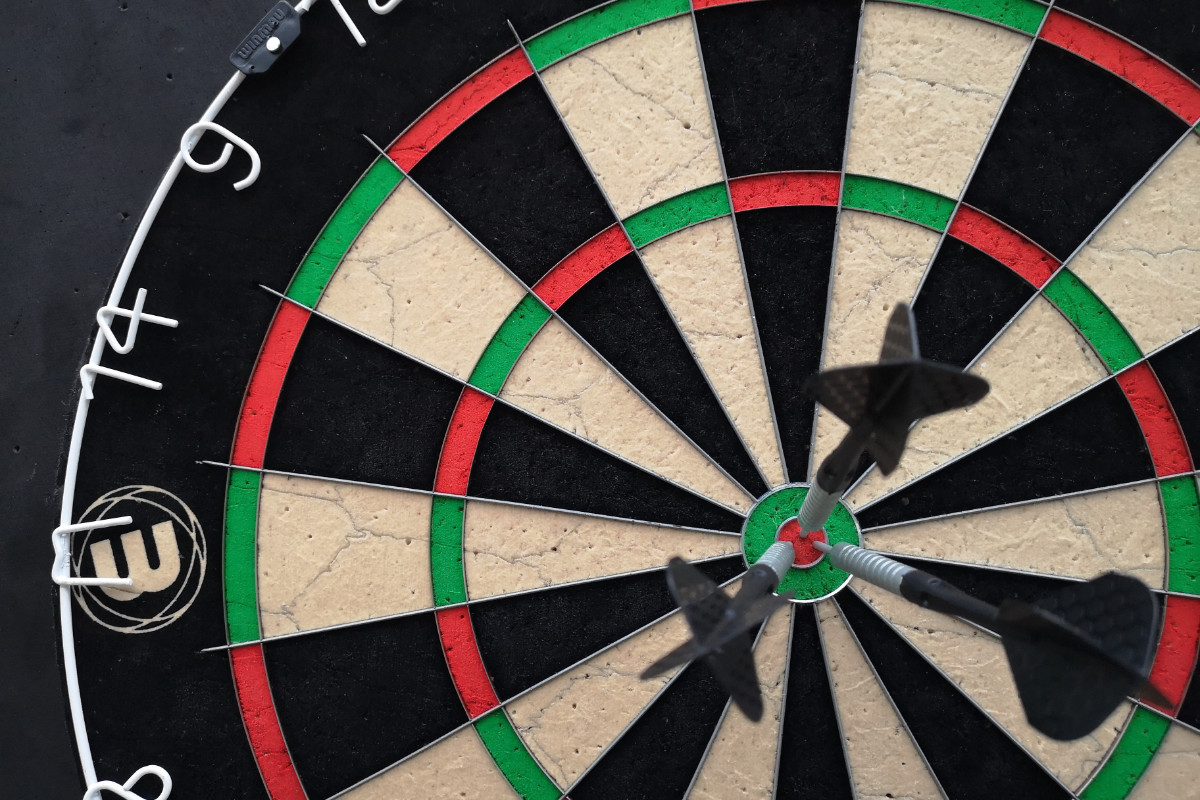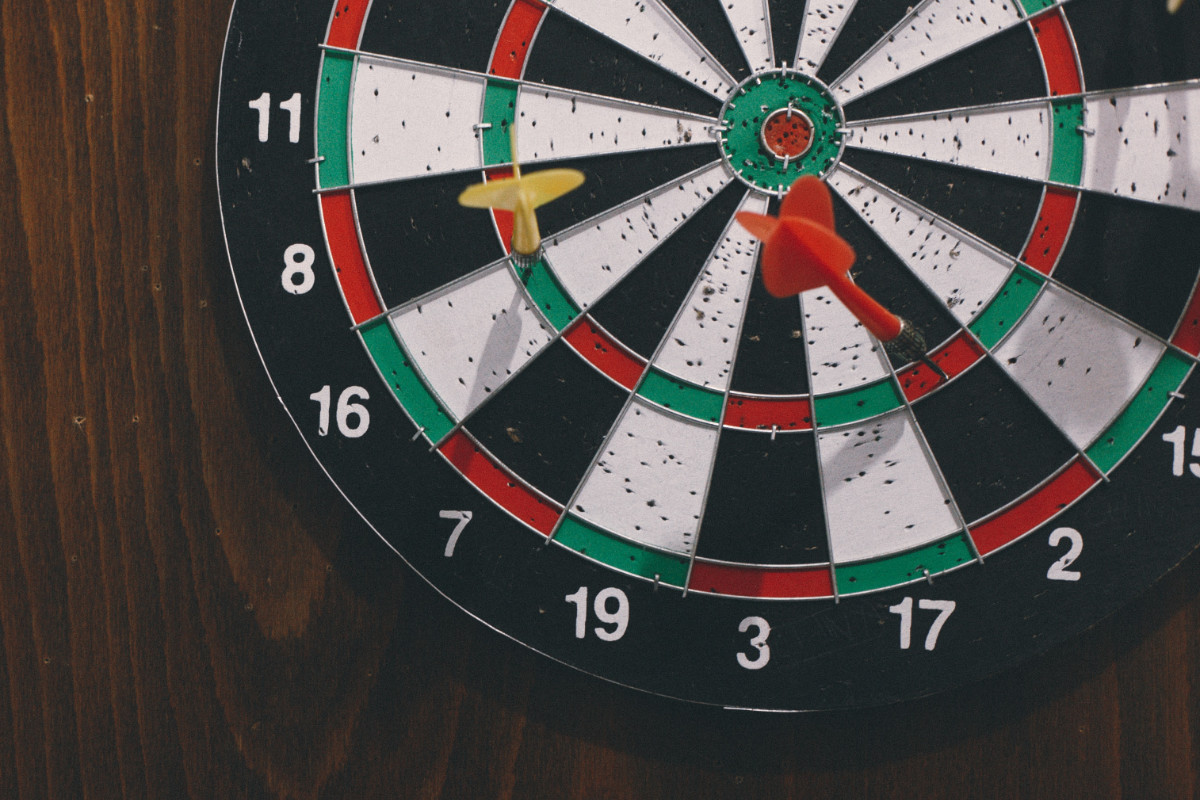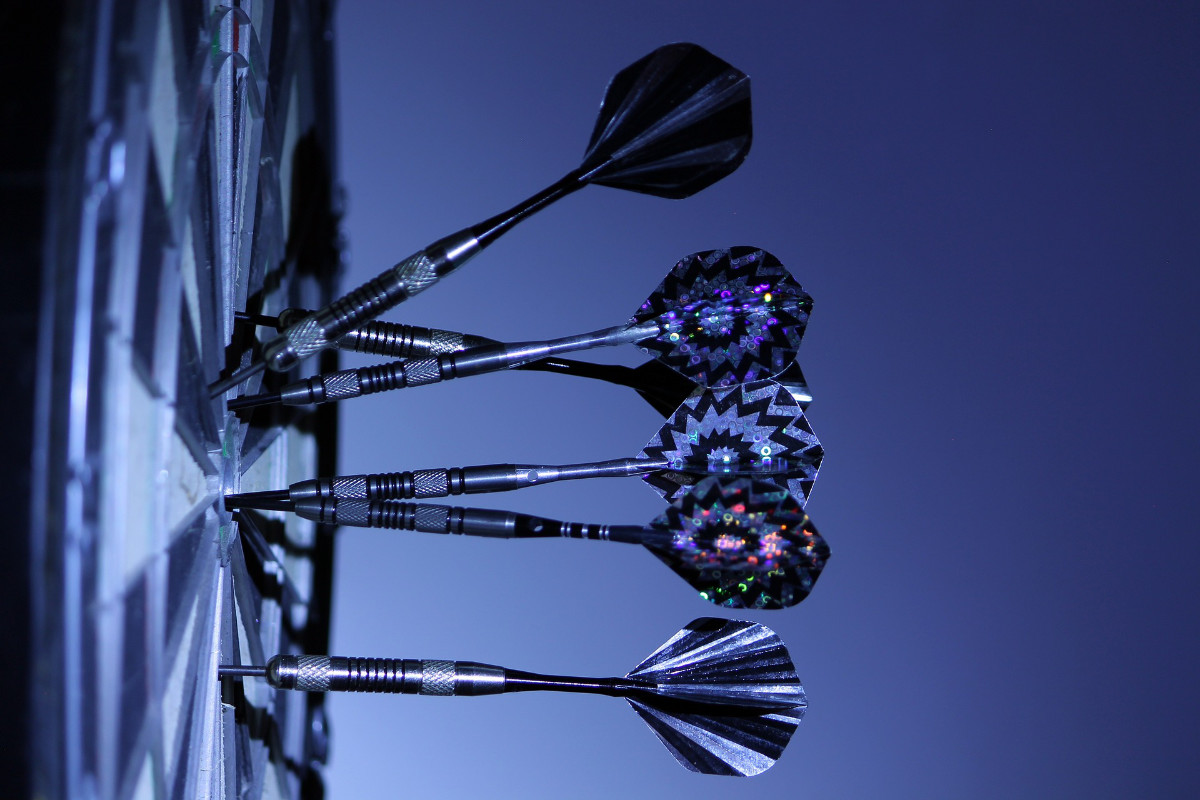Darts is an exciting and skill-based game, but occasionally, players may encounter a dart-on-dart impact, also known as a “Robin Hood.” This blog post will explain what happens when a dart hits another dart, why it occurs, and how to prevent such collisions to enhance your gameplay and safeguard your equipment.
What Happens When a Dart Hits Another Dart?
A Robin Hood occurs when a thrown dart lands in the tail or flight of another dart already on the dartboard. The incoming dart’s point wedges itself in the flight or shaft of the dart already on the board, causing it to stick or hang from the first dart. Although this may look impressive, it can lead to potential damage to your darts and disrupt your gameplay. In most cases, a Robin Hood doesn’t count towards your score, as the second dart is not embedded in the dartboard’s sisal fibers.
Why Do Dart-on-Dart Impacts Happen?
Several factors can contribute to dart collisions:
- Throwing accuracy: While precision is crucial in darts, consistently aiming for the same small target areas can increase the likelihood of a Robin Hood.
- Dartboard conditions: A worn-out dartboard with shallow or loose sisal fibers may not hold darts as securely, making it easier for incoming darts to collide with those already on the board.
- Player skill level: Experienced players tend to group their darts tightly, increasing the chances of a dart-on-dart impact.
How to Prevent Dart Collisions
Here are some tips to help you avoid Robin Hood scenarios and protect your darts:
- Maintain your dartboard: Regularly rotate your dartboard to ensure even wear and prolong its lifespan. Replace it once the sisal fibers become too loose or damaged.
- Use durable dart flights: Opt for thicker flights or those made from more robust materials to minimize the risk of damage during a collision.
- Spread your targets: While it’s essential to aim for high-scoring areas, consider varying your target spots on the board to reduce the chances of a dart-on-dart impact.
- Experiment with different shaft lengths: Using darts with longer or shorter shafts may help reduce the likelihood of collisions by altering the angle at which your darts enter the board.
Conclusion
Understanding what happens when a dart hits another dart and implementing the tips shared in this blog post can help you prevent Robin Hood scenarios, safeguard your equipment, and enhance your darts game. Remember to maintain your dartboard, choose durable flights, vary your targets, and experiment with different shaft lengths to minimize dart-on-dart impacts and keep your game running smoothly.



